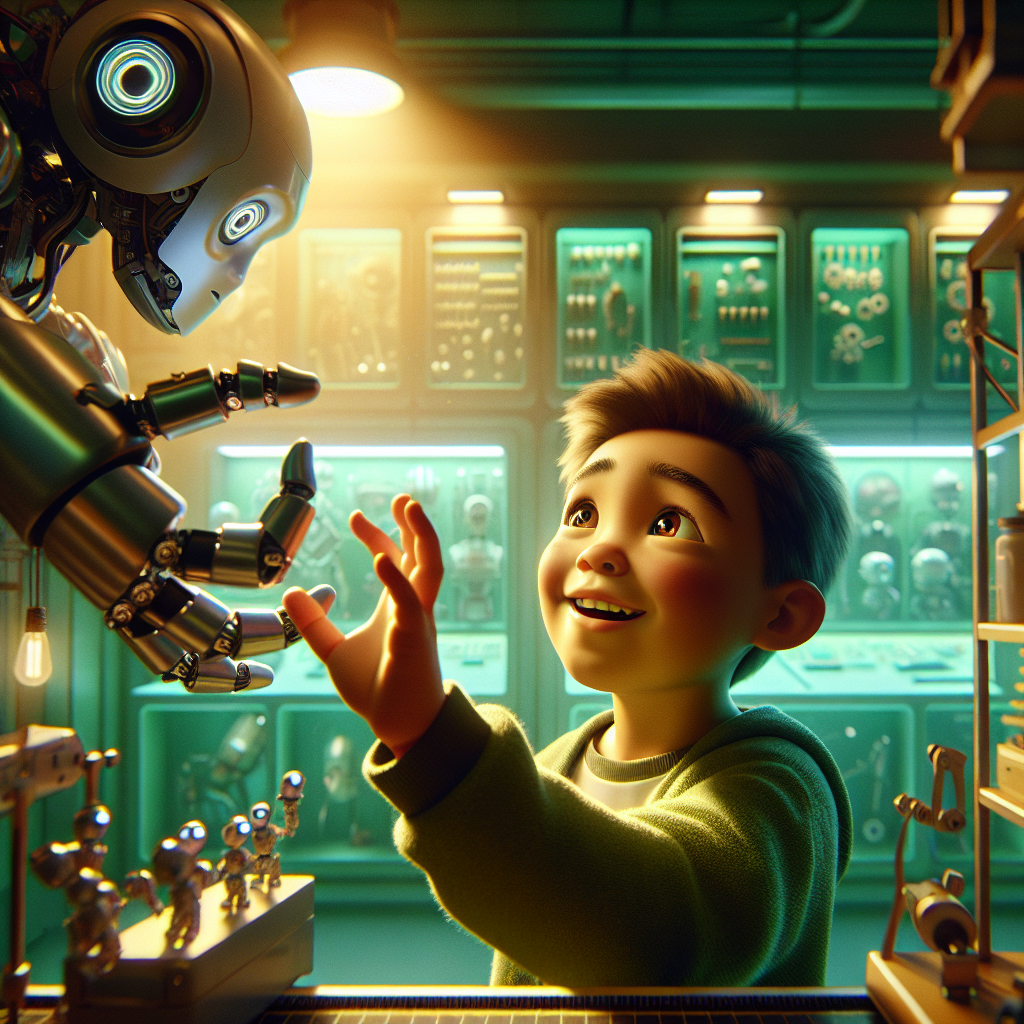General-Purpose Robotics: What Atlas Teaches Us About Future AI Applications
The world of robotics is evolving rapidly, and with it comes the promise of revolutionary changes in how we integrate robots into daily life. Leading this charge is Boston Dynamics’ humanoid robot, Atlas, a stunning example of what general-purpose robotics can achieve. As Atlas continues to shatter barriers, it is teaching us invaluable lessons about future AI applications and sparking imaginations worldwide.
The Breakthrough of Atlas: A Single AI Model
Boston Dynamics is famous for its ingenious work in robotics, and their latest achievements with Atlas have set a new standard. At the heart of this breakthrough is a single artificial intelligence (AI) model that empowers Atlas to adeptly handle both walking and grasping tasks. This development marks a critical stride toward creating general-purpose robotic algorithms—systems capable of handling a variety of tasks without needing specific programming for each one.
Russ Tedrake, a leader in this project, compares the capabilities of Atlas to versatile tools: _“The feet are just like additional hands, in some sense, to the model.”_ This innovative approach highlights the potential of robots like Atlas to perform complex, multifaceted actions in real-world scenarios, much like humans do. By leveraging a combination of visual and proprioceptive data with language prompts, the AI model mimics the learning style of large language models (LLMs), creating a system that can adapt and learn from diverse experiences.
Instinctive Recovery and Emergent Skills
One of the most impressive facets of Atlas’ development is its ability to demonstrate emergent skills, such as instinctive recovery after dropping an item without prior training. This capability reflects a leap towards true general-purpose robotics, where robots can autonomously adjust to new challenges. Just as a child intuitively learns to walk and recover from stumbles, Atlas uses its AI model to naturally respond to unexpected changes.
Ken Goldberg, a notable figure in robotics, emphasizes the importance of this advancement, stating, _“Coordination of legs and arms is a big deal.”_ With this coordination, Atlas can navigate complex environments with grace and agility, paving the way for robots that might one day assist us in areas ranging from healthcare to disaster response.
General-Purpose Robotics: A New Horizon
The concept of general-purpose robotics represents a radical shift from the task-specific machines of yesterday. Instead of needing dedicated robots for each particular function—be it vacuuming floors or assembling cars—we are heading toward versatile machines that can pivot between tasks. This shift promises to revolutionize industries, opening doors to more adaptable and efficient workflows.
An Example from Real Life: Your Smartphone
Consider your smartphone, a quintessential example of a general-purpose device. It has transcended its original function of making calls to become a multi-tool for photography, internet surfing, navigation, and more—all thanks to software evolution and app ecosystems. Similarly, general-purpose robotics aims to extend the capabilities of robots beyond their initial designs, transforming them from specialized tools into adaptable helpers.
Implications for Future AI Applications
The technology behind Atlas is not just about making robots move better. It’s a significant step toward more intelligent and adaptable AI applications. Future AI systems could use similar models, merging various data inputs to offer more nuanced and responsive solutions. The ability for AI to understand and adapt to different elements in real-time could fuel innovation across numerous fields.
In healthcare, for instance, robots might work alongside human caregivers in hospitals, shifting seamlessly from surgical assistance to patient monitoring. In industries, these robots could take on complex manufacturing roles, adapting to new tasks as products and processes evolve.
Atlas and the Broader Impact on Robotics
Boston Dynamics is not alone in its quest for developing intelligent robots. Collaborations, such as those with the Toyota Research Institute, highlight the broader industry focus on melding AI with robotics to push beyond current capabilities. These partnerships underscore a growing recognition that general-purpose robotics holds immense potential to improve efficiency and reliability across diverse applications.
The Potential for AI-Driven Autonomy
Atlas’ success also has implications beyond just robotics, offering insights into the development of autonomous systems. As these systems become more sophisticated, industries like agriculture, transport, and logistics can benefit from decreased dependency on human intervention, leading to cost savings and enhanced safety.
Imagine autonomous vehicles sharing roadways with human drivers, coordinating seamlessly through shared data and machine learning algorithms reminiscent of Atlas’. This level of integration could drastically reduce traffic incidents and optimize travel efficiency.
Conclusion: A Call to Innovate
As we stand at the precipice of a new era in robotics, the lessons from Atlas are clear: the possibilities of general-purpose robotics and future AI applications are boundless. The innovations spearheaded by Boston Dynamics are just the beginning, and they beg the question of how we can further harness AI to solve real-world problems.
The journey towards fully autonomous, adaptable robots is not just about technological achievement—it’s about exploring new frontiers of human potential in synergy with technology.
Join the Conversation
Are you inspired by the innovations in general-purpose robotics? We’d love to hear your thoughts on how these advancements could shape different facets of life. Join the conversation by sharing your ideas or visiting Boston Dynamics’ work to see Atlas in action. Let’s shape the future of robotics and AI together, exploring how we can use these breakthroughs to enhance society.


